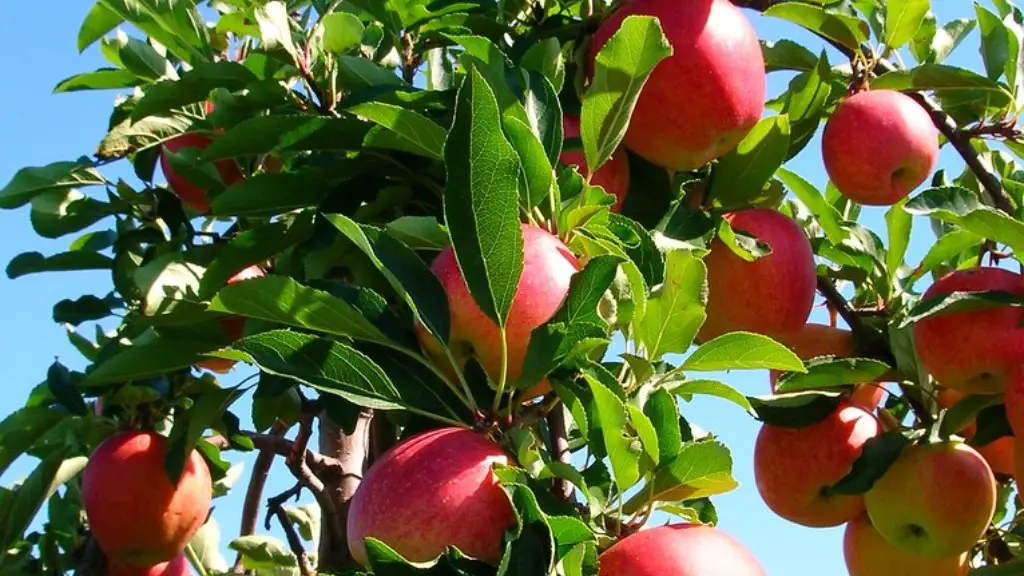Background Information
Palm trees are in the family Arecaceae, and originally came from the tropics around the world. Palms are also one of the oldest plants in the world and have been around since the prehistoric times, with fossils found of palm trees dating back more than 80 million years. Palms are known for their woody, unbranched stems and fan-like leaves. These trees produce an edible fruit, which can come in different shapes, sizes, and colors depending on the species.
Types of Palm Trees
There are over 2400 species of palm trees in the world, with many different shapes and sizes. Pygmy Date Palms, Coconut Palms and Kangaroo Paws are some of the most popular species of palm trees. The most well-known and common type of palm tree is the coconut palm, which is native to the tropics and can grow up to 30 feet tall. Other popular types of palm trees are the Areca (or Betel Nut), African Oil Palm, and Date palms, which produce edible dates. There are also palm trees with large fronds, such as the Canary Island Date Palms, which can grow up to 60 feet tall and have a fan-shaped canopy.
Features of Palm Trees
Palm trees generally have a single trunk and thin leaves that grow in an upright position, but there are some species which have multiple trunks and may even grow underground. Palm trees have a wide variety of features, including shallow root systems, round crowns and long arching leaves with lobed edges. Palm trees can be used for shade, food and even medicine. In some parts of the world, such as Central and South America, palm trees are used in the production of medicines, while in other areas they are used as a source of dietary protein.
Uses of Palm Trees
Palm trees are used in many ways. Palm fronds are often used to make traditional thatched roofs and thatch is also used to cover huts. Palm trees are also used in cosmetics, furniture, building materials, animal feed, and even in traditional medicines. Palm fruits are used in cooking and are also eaten fresh or dried to make flour. The wood of palm trees is also used for making furniture and for construction purposes.
Environmental Impact
Palm trees are an important part of the ecosystem, providing shade and shelter for wildlife. They also serve as a valuable source of food, medicine, and raw materials for humans. Unfortunately, due to agriculture, rising urbanization, and climate change, palm tree habitats are at risk of disappearing. Deforestation to make room for agricultural land, coupled with an increase in global warming, has made it difficult for these trees to survive and thrive.
Conservation Efforts
Fortunately, conservation efforts to protect palm tree habitats are beginning to take shape. WWF launched a project in 2016 to conserve the threatened palm species in the Caribbean and advocated for legislation to protect threatened habitats. Reforestation efforts are also being undertaken in areas where forests have been lost due to deforestation.
Factors Affecting Palm Trees
Various factors can affect palm trees, such as temperature and humidity. These trees require hot and humid climates to thrive, and as such, certain species can only grow in tropical areas. In addition, lack of water can also affect the growth and vigor of the palm tree, making it less likely to survive.
Importance of Planting Palm Trees
Palm trees are an incredibly important part of the ecosystem, and planting them is essential to prevent further destruction of habitats. Planting palm trees helps restore habitats, provide food and shelter for wildlife, and help combat climate change by sequestering carbon. Planting palm trees can also have a positive psychological impact on humans, as it can provide a space for people to relax and connect with nature.
Caring for Palm Trees
Caring for palm trees properly is essential to ensure their survival. Proper care includes providing them with the right amount of sunlight, water, and fertilizer, as well as making sure to keep them away from extreme temperatures. Pruning and trimming palm trees can also help with their growth, as well as preventing the growth of disease and pests.
Uses of Palm Tree Products
Palm trees produce a variety of products, such as edible fruits, wood, fiber, medicines, and oils. The wood is often used to make furniture and construction materials, while the fiber is used to make rope and paper. The edible fruits can be eaten fresh or dried to make flour. Palm tree oils are also commonly used in cosmetics, soaps, and fragrances.
Cultural Significance of Palm Trees
Palm trees are often featured in many different cultures and religions in the world, such as Christianity, Judaism, and Islam. In Christianity, the palm trees are often seen as symbols of Christ’s triumphal entrance into Jerusalem. In Judaism, palm trees are symbols of peace and celebration. In Islam, palms are symbols of hospitality and provide a source of food and protection to people.
Conclusion
Palm trees are an iconic part of the tropical landscape and have been around since prehistoric times. They have a variety of uses, from providing food, medicine and shelter to humans, to serving as a source of shade and protection for wildlife. Palm trees are important for the environment, providing habitats for many animals, sequestering carbon, and helping to combat climate change. With proper care and maintenance, palm trees can continue to thrive and provide many benefits to humans and the environment.



